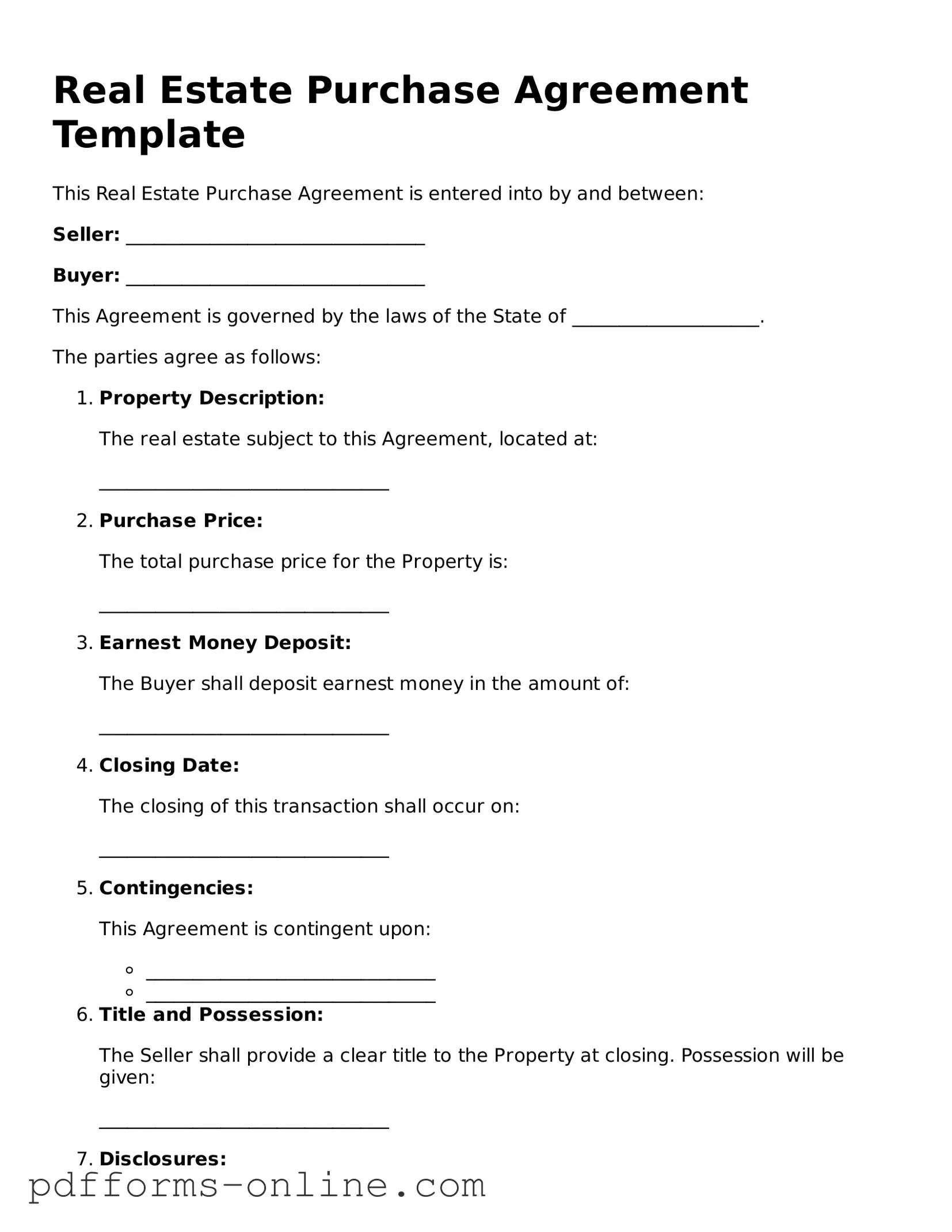Real Estate Purchase Agreement Template
This Real Estate Purchase Agreement is entered into by and between:
Seller: ________________________________
Buyer: ________________________________
This Agreement is governed by the laws of the State of ____________________.
The parties agree as follows:
- Property Description:
The real estate subject to this Agreement, located at:
_______________________________
- Purchase Price:
The total purchase price for the Property is:
_______________________________
- Earnest Money Deposit:
The Buyer shall deposit earnest money in the amount of:
_______________________________
- Closing Date:
The closing of this transaction shall occur on:
_______________________________
- Contingencies:
This Agreement is contingent upon:
- _______________________________
- _______________________________
- Title and Possession:
The Seller shall provide a clear title to the Property at closing. Possession will be given:
_______________________________
- Disclosures:
The Seller informs the Buyer about:
- _______________________________
- _______________________________
- Governing Law:
This Agreement will be governed by the laws of the State of:
_______________________________
In witness whereof, the parties hereto have executed this Real Estate Purchase Agreement on this ______ day of __________, 20__.
Seller Signature: ________________________________
Buyer Signature: ________________________________
